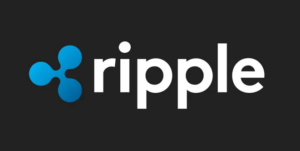In recent times, the world of cryptocurrency has been abuzz with discussions about the future of Ethereum. As one of the leading digital currencies after Bitcoin, Ethereum plays a crucial role in the decentralized finance ecosystem. However, as 2022 unfolds, a significant wake-up call has emerged, urging enthusiasts and investors to pay close attention to the trajectory of Ethereum’s future.
At the core of Ethereum’s future lies its transition from the current proof-of-work (PoW) consensus mechanism to a proof-of-stake (PoS) model. This fundamental shift is driven by the pressing need to address scalability issues, energy consumption concerns, and overall network efficiency. PoS intends to enhance the network’s security, reduce carbon footprint, and enable faster transaction processing.
Vital to understanding this transition is the concept of staking. In a PoS system, validators are chosen to create new blocks and secure the blockchain based on the number of coins they hold and are willing to “stake.” Staking involves locking up a certain amount of Ethereum as collateral to support network operations. In return, validators earn rewards in the form of additional Ethereum.
As Ethereum paves its way towards a PoS model, the community is grappling with challenges and opportunities. One major challenge is the need to ensure a smooth migration without disrupting existing applications, decentralized finance protocols, and smart contracts running on the network. Ensuring backward compatibility and maintaining network security are top priorities during this transition phase.
Moreover, the upgrade to Ethereum 2.0, also known as the Serenity upgrade, introduces significant changes to the network’s architecture. The integration of shard chains aims to enhance scalability by parallelizing transaction processing across multiple chains. This innovation is expected to boost Ethereum’s transaction throughput and reduce congestion, ultimately improving user experience and lowering transaction fees.
Another crucial aspect shaping Ethereum’s future is the emergence of Layer 2 solutions. These scaling solutions operate on top of the main Ethereum blockchain to process transactions more efficiently off-chain. Examples include Optimistic Rollups and zkRollups, which aim to increase transaction throughput while maintaining the security guarantees of the Ethereum network.
Furthermore, the rise of decentralized finance (DeFi) applications built on Ethereum is propelling the network towards mainstream adoption. DeFi platforms offer users a wide range of financial services, including lending, borrowing, trading, and yield farming, all powered by smart contracts on the Ethereum blockchain. The explosive growth of DeFi underscores Ethereum’s potential to revolutionize traditional finance and democratize access to financial services globally.
As Ethereum navigates its evolution in 2022 and beyond, staying informed about upcoming upgrades, network enhancements, and industry trends is paramount for investors, developers, and enthusiasts alike. By understanding the dynamics shaping Ethereum’s future, stakeholders can position themselves to capitalize on opportunities and contribute to the growth and resilience of the Ethereum ecosystem.
In conclusion, Ethereum’s journey towards a PoS consensus mechanism, the Serenity upgrade, Layer 2 scaling solutions, and the rapid expansion of DeFi applications signal a transformative path for the network. The wake-up call for Ethereum’s future beckons all stakeholders to actively engage, adapt, and innovate in the ever-evolving landscape of cryptocurrency and blockchain technology.


